This is Part Three in a series. Part One can be found here, and Part Two can be found here.
Before going further with the exposition of magical models, today I am going to take a step back and talk a bit about some basic ideas from quantum physics. So first off, I need to repeat the disclaimer from last week: quantum physics does not in any way prove the existence of magical or paranormal phenomena. While I believe that these concepts are important for generating a working model of magical phenomena, it is also true that quantum physics would work just fine in a universe entirely devoid of anything conventionally described as paranormal.
Quantum physics was originally developed to explain how particles and waves seem to behave like two sides of the same nature. For example, under some circumstances an electron will seem to behave like what you would expect from a negatively charged particle, but under other circumstances it will show interference patterns more appropriate to a wavelike nature. The classic experiment illustrating this is called the double-slit experiment, and was one of the earliest indicators that particles behaved like something other than tiny balls of matter.
The experiment itself is simple. You set up an electron source and a target, with a barrier placed between them. The barrier is constructed with two slits, one to either side. You fire electrons from the source through the barrier, and expect to see two distinct bars on the target representing where the electrons strike. But that isn't what you get. Instead, you see a wavelike interference pattern, more akin to what you would see if you were projecting waves of light through the apparatus.
So you get two electron detectors, and place one at each slit. This will tell you which slit each electron passed through. It works just fine - except that when you turn the detectors on, suddenly the electrons start behaving like particles and the interference pattern disappears. This effect is often described by breathless paranormal enthusiasts as "reality doesn't exist unless you're looking at it!" But that's the entirely wrong interpretation. The wave nature is just as "real" as the particle nature is.
The effect also doesn't have anything to do with whether a person is looking at the detectors or not. If they're turned on, you get the effect. The original explanation was that detectors were in some way affecting the electrons, because entirely passive detection is impossible. And at small scales, you are in effect trying to determine the position of a basketball in the center of a gym by throwing pool balls at it and recording where they bounce. Every time a pool ball strikes the basketball, its position and momentum change.
But later experiments seemed to show that more was going on than that. The wave nature seemed more durable and weirder than simple thought experiments like the basketball model could explain. The particle and wave natures seemed far more intertwined and hard to separate than mere uncertainty would predict. Quantum physicists split into two camps on this issue, and each side proposed a model that was essentially metaphysical in nature.
These two main models for the wave/particle duality are called the Copenhagen interpretation and the De Broglie-Bohm interpretation. According to Copenhagen, the wavefunction represents the entire "reality" of a particle, meaning that physical systems do not possess distinct properties until they are measured, at which point the wavefunction collapses and returns a value. This again feeds into the "reality doesn't exist unless you're looking at it!" nonsense, and once again it is the entirely wrong interpretation.
De Broglie-Bohm contends that the particle and wave exist simultaneously. Under this model, the wave nature of a particle is called a pilot wave. The particle may be thought of as tiny ball of matter moving through the "wake" produced by a self-generated wavefunction. Think of the basketball from the gym example rolling around on a vibrating sheet of fabric. Each type of particle creates its own "class" of pilot wave, and waves of the same class may interact. According to this interpretation, that interaction is what produces the interference pattern in the double-slit experiment.
Copenhagen asserts that when the detector is turned on, the wavefunction of each electron is collapsed when its state is measured, so the interference pattern disappears. According to De Broglie-Bohm, the particle is disturbed by the detector in such a way that the pilot wave collapses and is regenerated beyond the slits. Since the interference pattern depends on the wave propagating through both slits, regenerating the pilot waves beyond them likewise causes the pattern to disappear.
What is important to understand here is that these interpretations are essentially metaphysical in nature. They make the same mathematical predictions of experimental results, and there is currently no way to empirically test which is more correct. Going forward with this series, I am going to explain my model in terms of the De Broglie-Bohm interpretation, but only because it seems to make more intuitive sense and is easier to explain. It can be explained in Copenhagen terms as well, but the explanation is a little more confusing.
A second big debate in quantum physics is the one-world versus many-worlds interpretation. This revolves around the ideas presented by the "Schroedinger's Cat" thought experiment. Originally created as a criticism of Copenhagen, Erwin Schroedinger proposed a thought experiment in which a cat is placed in a box with a vial of poison linked to a particle of radioactive material. Within a given interval, the material either decays or doesn't, as determined by the particle's wavefunction. If the particle decays, the vial is broken and the poison is released, killing the cat. Otherwise, the cat is fine.
So Schroedinger pointed out that it was intuitively ridiculous to suggest, as per Copenhagen, that the cat must essentially be simultaneously dead and alive until the box is opened and the wavefunction is collapsed, as observing whether the cat is dead or alive constitutes measurement of the particle's quantum state. But the general consensus among Copenhagen supporters is that this precisely what happens, as the fate of the cat rests in a state that contains both possibilities. This is one more point that the "reality doesn't exist unless you're looking at it!" folks like to make, and again, the assertion is fundamentally incorrect.
Besides intuition - that is, "common sense" - there is no reason to assume that the wave state which can contain multiple possible outcomes is not "real." Quantum physics can show that the wave state quite real, and that the possible outcomes are delineated according to consistent and repeatable principles. In fact, the standard model in quantum physics is one of the great theoretical triumphs of our age. It was proposed before many of the measurements it predicts had been made, and those measurements were found to conform entirely to the predictions of the model. That holds whether we're talking about waves, particles, or both.
The many-worlds interpretation was worked out as a response to the ideas explored by Schroedinger's Cat. According to many-worlds, all quantum states exist simultaneously and are equally real. In effect, every quantum interaction spins off a new "world" in which each of the possible outcomes has occurred. So there is a "cat-alive" world and a "cat-dead" world. When we make the measurement, all we are doing is discovering which of those worlds we are currently inhabiting. There is presumably another version of "us" in the other world as well.
Alternately, the one-world model suggests that the outcome we don't measure is essentially discarded. The world we are in is the world we are in, and Schroedinger's Cat is simply unintuitive rather than a thought experiment highlighting a real problem or issue with the model. I would point out that since there's a detector present, and it doesn't matter if anyone is looking at it, in theory the wavefunction would collapse before anyone opened the box, so perhaps that resolved the dichotomy right there.
A number of prominent model magicians are many-worlders. One of them is my friend and OTO brother Lon DuQuette. DuQuette believes that practical magick works by allowing the magician to "navigate" between the various possible outcomes, in effect selecting the "world" that best conforms to his or her will. From this perspective, the key to creating a specific change is to change yourself in such a way that the "world" you want is the outcome that you will experience.
However, for purposes of further discussion, I'm going to go with one-world. Again, these two models are metaphysical speculations and they make all the same predictions. Until we devise a means of determining whether or not parallel worlds exist, we probably will be unable to work out which approach is more correct. One world, though, makes some of the concepts easier to explain in a strictly intuitive sense. "Close" magical results, in particular, are harder to conceptualize under the many-worlds approach.
One other important concept employed by my magical model is particle entanglement. This is the "spooky action at a distance" that so troubled Einstein. Still, in experiment after experiment, it seems to hold up. The idea is this: if you take two particles and force them to interact in such a way that you know the state of one will be the opposite of the other, you only need to measure one of the two particles to determine the state of the other. So measuring one particle collapses the wavefunction for both, regardless of how far apart they are.
If the wavefunction collapse is a distinct physical event, this seems to violate the principle that nothing can travel faster than light. The paradox is that the further we investigate, the more it looks like the collapse is in fact physical. Under De Broglie-Bohm, it is relatively straightforward to interpret this idea - the two particles share the same pilot wave, which is a non-local phenomenon. Information does not travel along the wave from point A to point B, but rather affects the single entangled pilot wave all at once.
Physicists have been working on entanglement for years, and so far have managed to entangle as many as 216 particles. In effect, those particles all share a single, massive pilot wave - or, alternately, are composed of a single massive wavefunction under Copenhagen that can be collapsed by measuring any of them. Or, under the many worlds interpretation, correspond to a handful of possible "worlds" despite the number of particles involved.
Scaling this up to larger objects is quite difficult, because of the mathematical complexity involved in representing so many different particles. A macro-scale object may contain billions or trillions of individual atoms, all with their own wavefunctions. Some degree of entanglement is generally present because the particles within an object interact with each other, but this state is constantly changing even in an object that appears to be solid.
This, then, provides a physical foundation for the things that a magical model needs to interact with and address. As I mentioned above, going forward I will explain concepts in terms of the one-world and De Broglie-Bohm interpretations, but this is only for convenience. One-world makes the idea of "close" magical results easier to follow, because to discuss them in many-worlds terms requires a coordinate system to explain how "close" each world is to the others. There are various ways to do that, but they add another layer to the exposition of the model.
Likewise, De Broglie-Bohm lines up better with a the philosophical underpinnings of Western magick. The Greek philosophers followed by the Hermetics broke reality down into the twin principles of matter and form, and these can easily be modeled as corresponding to particle and pilot wave (including entanglement). Keep in mind, though, that the same exact math works in Copenhagen, and just because De Broglie-Bohm seems more intuitive, that doesn't necessarily mean it corresponds better to the underlying physical reality.
And if you do run into one of those "reality doesn't exist unless you're looking at it!" folks, just remember that the particle and the wave are both "real" in a physical sense. In De Broglie-Bohm they always go together, and in Copenhagen they're the same thing. The correct statement is more like "In the presence of discrete measurement, physical reality presents a particle nature. In the absence of the same, it presents a wavelike nature."
But that doesn't sound nearly as weird or magical or funky or "mind-blowing" as telling people quantum physics proves that whether things exist or not is entirely based on your own personal state of consciousness. It may be fun to think about, but it's completely wrong.
Before going further with the exposition of magical models, today I am going to take a step back and talk a bit about some basic ideas from quantum physics. So first off, I need to repeat the disclaimer from last week: quantum physics does not in any way prove the existence of magical or paranormal phenomena. While I believe that these concepts are important for generating a working model of magical phenomena, it is also true that quantum physics would work just fine in a universe entirely devoid of anything conventionally described as paranormal.
Quantum physics was originally developed to explain how particles and waves seem to behave like two sides of the same nature. For example, under some circumstances an electron will seem to behave like what you would expect from a negatively charged particle, but under other circumstances it will show interference patterns more appropriate to a wavelike nature. The classic experiment illustrating this is called the double-slit experiment, and was one of the earliest indicators that particles behaved like something other than tiny balls of matter.
The experiment itself is simple. You set up an electron source and a target, with a barrier placed between them. The barrier is constructed with two slits, one to either side. You fire electrons from the source through the barrier, and expect to see two distinct bars on the target representing where the electrons strike. But that isn't what you get. Instead, you see a wavelike interference pattern, more akin to what you would see if you were projecting waves of light through the apparatus.
So you get two electron detectors, and place one at each slit. This will tell you which slit each electron passed through. It works just fine - except that when you turn the detectors on, suddenly the electrons start behaving like particles and the interference pattern disappears. This effect is often described by breathless paranormal enthusiasts as "reality doesn't exist unless you're looking at it!" But that's the entirely wrong interpretation. The wave nature is just as "real" as the particle nature is.
The effect also doesn't have anything to do with whether a person is looking at the detectors or not. If they're turned on, you get the effect. The original explanation was that detectors were in some way affecting the electrons, because entirely passive detection is impossible. And at small scales, you are in effect trying to determine the position of a basketball in the center of a gym by throwing pool balls at it and recording where they bounce. Every time a pool ball strikes the basketball, its position and momentum change.
But later experiments seemed to show that more was going on than that. The wave nature seemed more durable and weirder than simple thought experiments like the basketball model could explain. The particle and wave natures seemed far more intertwined and hard to separate than mere uncertainty would predict. Quantum physicists split into two camps on this issue, and each side proposed a model that was essentially metaphysical in nature.
These two main models for the wave/particle duality are called the Copenhagen interpretation and the De Broglie-Bohm interpretation. According to Copenhagen, the wavefunction represents the entire "reality" of a particle, meaning that physical systems do not possess distinct properties until they are measured, at which point the wavefunction collapses and returns a value. This again feeds into the "reality doesn't exist unless you're looking at it!" nonsense, and once again it is the entirely wrong interpretation.
De Broglie-Bohm contends that the particle and wave exist simultaneously. Under this model, the wave nature of a particle is called a pilot wave. The particle may be thought of as tiny ball of matter moving through the "wake" produced by a self-generated wavefunction. Think of the basketball from the gym example rolling around on a vibrating sheet of fabric. Each type of particle creates its own "class" of pilot wave, and waves of the same class may interact. According to this interpretation, that interaction is what produces the interference pattern in the double-slit experiment.
Copenhagen asserts that when the detector is turned on, the wavefunction of each electron is collapsed when its state is measured, so the interference pattern disappears. According to De Broglie-Bohm, the particle is disturbed by the detector in such a way that the pilot wave collapses and is regenerated beyond the slits. Since the interference pattern depends on the wave propagating through both slits, regenerating the pilot waves beyond them likewise causes the pattern to disappear.
What is important to understand here is that these interpretations are essentially metaphysical in nature. They make the same mathematical predictions of experimental results, and there is currently no way to empirically test which is more correct. Going forward with this series, I am going to explain my model in terms of the De Broglie-Bohm interpretation, but only because it seems to make more intuitive sense and is easier to explain. It can be explained in Copenhagen terms as well, but the explanation is a little more confusing.
A second big debate in quantum physics is the one-world versus many-worlds interpretation. This revolves around the ideas presented by the "Schroedinger's Cat" thought experiment. Originally created as a criticism of Copenhagen, Erwin Schroedinger proposed a thought experiment in which a cat is placed in a box with a vial of poison linked to a particle of radioactive material. Within a given interval, the material either decays or doesn't, as determined by the particle's wavefunction. If the particle decays, the vial is broken and the poison is released, killing the cat. Otherwise, the cat is fine.
So Schroedinger pointed out that it was intuitively ridiculous to suggest, as per Copenhagen, that the cat must essentially be simultaneously dead and alive until the box is opened and the wavefunction is collapsed, as observing whether the cat is dead or alive constitutes measurement of the particle's quantum state. But the general consensus among Copenhagen supporters is that this precisely what happens, as the fate of the cat rests in a state that contains both possibilities. This is one more point that the "reality doesn't exist unless you're looking at it!" folks like to make, and again, the assertion is fundamentally incorrect.
Besides intuition - that is, "common sense" - there is no reason to assume that the wave state which can contain multiple possible outcomes is not "real." Quantum physics can show that the wave state quite real, and that the possible outcomes are delineated according to consistent and repeatable principles. In fact, the standard model in quantum physics is one of the great theoretical triumphs of our age. It was proposed before many of the measurements it predicts had been made, and those measurements were found to conform entirely to the predictions of the model. That holds whether we're talking about waves, particles, or both.
The many-worlds interpretation was worked out as a response to the ideas explored by Schroedinger's Cat. According to many-worlds, all quantum states exist simultaneously and are equally real. In effect, every quantum interaction spins off a new "world" in which each of the possible outcomes has occurred. So there is a "cat-alive" world and a "cat-dead" world. When we make the measurement, all we are doing is discovering which of those worlds we are currently inhabiting. There is presumably another version of "us" in the other world as well.
Alternately, the one-world model suggests that the outcome we don't measure is essentially discarded. The world we are in is the world we are in, and Schroedinger's Cat is simply unintuitive rather than a thought experiment highlighting a real problem or issue with the model. I would point out that since there's a detector present, and it doesn't matter if anyone is looking at it, in theory the wavefunction would collapse before anyone opened the box, so perhaps that resolved the dichotomy right there.
A number of prominent model magicians are many-worlders. One of them is my friend and OTO brother Lon DuQuette. DuQuette believes that practical magick works by allowing the magician to "navigate" between the various possible outcomes, in effect selecting the "world" that best conforms to his or her will. From this perspective, the key to creating a specific change is to change yourself in such a way that the "world" you want is the outcome that you will experience.
However, for purposes of further discussion, I'm going to go with one-world. Again, these two models are metaphysical speculations and they make all the same predictions. Until we devise a means of determining whether or not parallel worlds exist, we probably will be unable to work out which approach is more correct. One world, though, makes some of the concepts easier to explain in a strictly intuitive sense. "Close" magical results, in particular, are harder to conceptualize under the many-worlds approach.
One other important concept employed by my magical model is particle entanglement. This is the "spooky action at a distance" that so troubled Einstein. Still, in experiment after experiment, it seems to hold up. The idea is this: if you take two particles and force them to interact in such a way that you know the state of one will be the opposite of the other, you only need to measure one of the two particles to determine the state of the other. So measuring one particle collapses the wavefunction for both, regardless of how far apart they are.
If the wavefunction collapse is a distinct physical event, this seems to violate the principle that nothing can travel faster than light. The paradox is that the further we investigate, the more it looks like the collapse is in fact physical. Under De Broglie-Bohm, it is relatively straightforward to interpret this idea - the two particles share the same pilot wave, which is a non-local phenomenon. Information does not travel along the wave from point A to point B, but rather affects the single entangled pilot wave all at once.
Physicists have been working on entanglement for years, and so far have managed to entangle as many as 216 particles. In effect, those particles all share a single, massive pilot wave - or, alternately, are composed of a single massive wavefunction under Copenhagen that can be collapsed by measuring any of them. Or, under the many worlds interpretation, correspond to a handful of possible "worlds" despite the number of particles involved.
Scaling this up to larger objects is quite difficult, because of the mathematical complexity involved in representing so many different particles. A macro-scale object may contain billions or trillions of individual atoms, all with their own wavefunctions. Some degree of entanglement is generally present because the particles within an object interact with each other, but this state is constantly changing even in an object that appears to be solid.
This, then, provides a physical foundation for the things that a magical model needs to interact with and address. As I mentioned above, going forward I will explain concepts in terms of the one-world and De Broglie-Bohm interpretations, but this is only for convenience. One-world makes the idea of "close" magical results easier to follow, because to discuss them in many-worlds terms requires a coordinate system to explain how "close" each world is to the others. There are various ways to do that, but they add another layer to the exposition of the model.
Likewise, De Broglie-Bohm lines up better with a the philosophical underpinnings of Western magick. The Greek philosophers followed by the Hermetics broke reality down into the twin principles of matter and form, and these can easily be modeled as corresponding to particle and pilot wave (including entanglement). Keep in mind, though, that the same exact math works in Copenhagen, and just because De Broglie-Bohm seems more intuitive, that doesn't necessarily mean it corresponds better to the underlying physical reality.
And if you do run into one of those "reality doesn't exist unless you're looking at it!" folks, just remember that the particle and the wave are both "real" in a physical sense. In De Broglie-Bohm they always go together, and in Copenhagen they're the same thing. The correct statement is more like "In the presence of discrete measurement, physical reality presents a particle nature. In the absence of the same, it presents a wavelike nature."
But that doesn't sound nearly as weird or magical or funky or "mind-blowing" as telling people quantum physics proves that whether things exist or not is entirely based on your own personal state of consciousness. It may be fun to think about, but it's completely wrong.













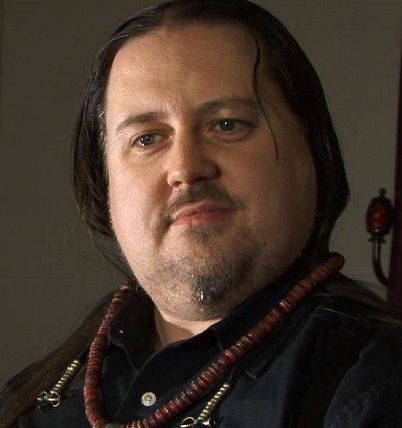

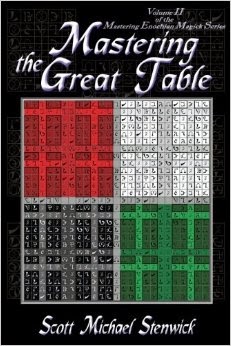

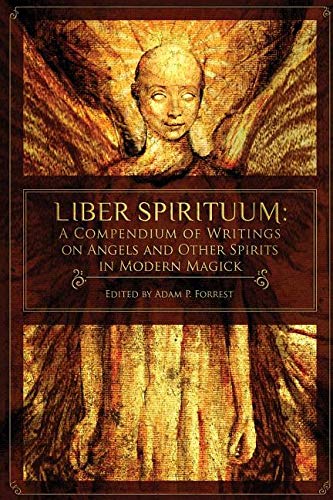
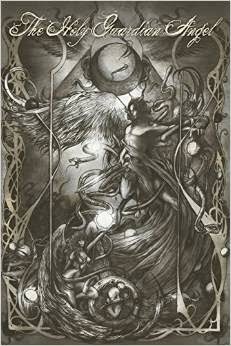

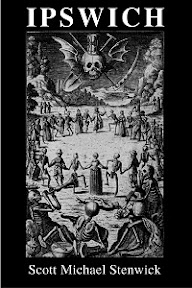
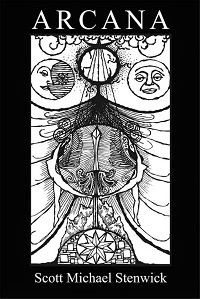

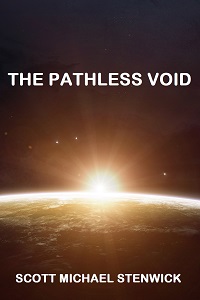

No comments:
Post a Comment